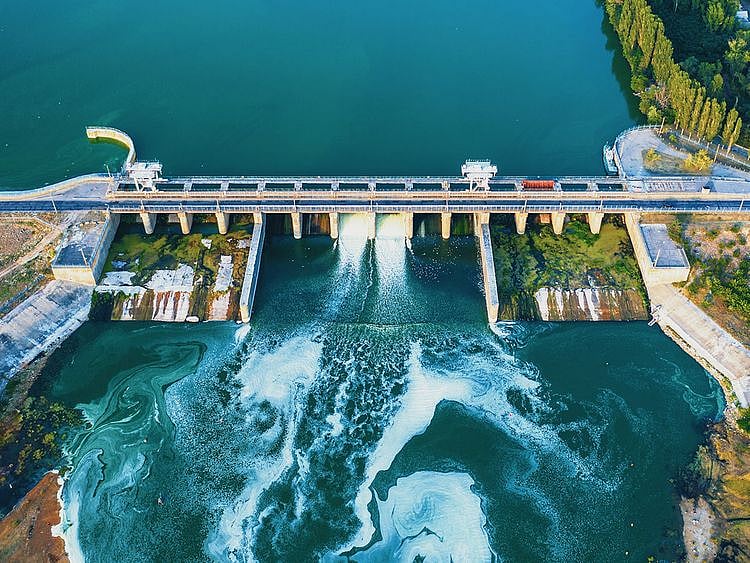Dams are not a panacea to the planet’s climate crisis
Countries that are building new hydropower dams may even accelerate global warming

Water has been providing energy for centuries, and hydropower was one of the earliest forms energies used to run factories. While energy transition has become the mantra of the world to mitigate climate change, hydropower has become an important component in many countries’ strategies to move away from fossil-fuel-based energy production.
More and more countries, particularly in Asia and Africa, are planning to build more and bigger hydropower dams to meet their climate commitments made in the Paris Agreement.
No doubt that the ambition of achieving net-zero emission by 2050 can only be achieved with expanding renewable energy production. Phasing out or phasing down coal is intricately dependent upon the generation of renewable energy. Hydropower constitutes the largest source of renewable electricity — 17% of the global power produced in 2020 with 1,330GW capacity — almost three times of wind power and six times that of solar.
The amount of hydropower produced in 2020 is roughly the same as the annual electricity consumption in the US. China is already far ahead in hydropower production with 356GW, followed by Brazil, the US, Canada, India, Norway, and Japan. In the last two decades, hydropower generation worldwide has increased almost 70%, and it is estimated to increase another 50% in the next two decades.
At present, there are 1,000 dams under construction, mainly in developing countries. The massive dam-building is ongoing in China, India, Turkey, and Ethiopia. Brazil, Nepal, Laos, and DRC have a long list of planned dam projects.
Hydropower is being preferred over other renewable sources such as biomass, solar, and wind power as it can effectively store energy and is less climate-dependent and less unpredictable. Therefore, with climate change already threatening the survival of the planet, hydropower generation is being given priority by many developing countries for the sake of national energy security.
International Hydropower Association says that more than 500GW of hydropower projects are being constructed or planned worldwide. It argues that in limiting global warming below 2 degrees C, hydropower production needs an increase of 850GW by 2050. If the ambition remains to limit to 1.5 degrees C, the estimated figure goes up to 1,200GW by 2050.
Source of big corruption
The cost of hydropower is still less than electricity produced from solar and wind. Moreover, political leaders prefer to build large dams as these massive construction projects can be easily portrayed as their achievements in country’s development and gain popular support. Furthermore, dam building is a massive source of corruption for the political class.
Hydropower emissions are usually overlooked in the climate change debate. Despite the common impression about hydropower being ‘good’ energy, people usually forget that the primary hydropower sources are large dams and their reservoirs. However, the inundation of large forest areas in the dam reservoirs results in removing massive tree cover.
The vegetation fermentation under stored water also produces methane and biogenic carbon. Research finds that the rotten vegetation behind dams emits nearly one billion tons of greenhouse gases every year, around 1.3% of total annual human-caused global emissions.
The contribution of greenhouse gases from dams varies from region to region. In temperate and dry climate zone, while reservoirs might work as carbon sinks, in tropical countries in Africa and Asia, where most dams are being built, the carbon footprints are equal to or even greater than fossil fuel.
Moreover, nearly 80% of greenhouse gases emitted by dam reservoirs are methane, the gas which is a highly accelerating agent in causing global warming. In hundred years, dams have produced more methane than rice cultivation and biomass burning.
Environmental consequences
Dams also have huge environmental consequences as they destroy the free-flowing river ecosystem, block fish migration, erode downstream riverbeds, and adversely affect the river’s aquatic and riparian life. Dams are also colossal construction projects, and building dams itself causes enormous environmental pollution locally, with the massive use of cement, steel, and rocks.
The hydropower industry has often been criticised for overlooking indigenous people’s rights. As per a conservative estimate, 80 million people have been displaced worldwide by dam projects, primarily indigenous and frontline communities living in forests and rural areas.
At least 20 million people have been displaced in India alone due to dam construction, and only 2 million have received some compensation. Even in a country like Sweden, where 45% of electricity generation comes from hydropower, 80% of its large hydropower dams are located on the traditional land of Sami, country’s indigenous minority group.
Over and above, the dams are too costly, particularly by the poor developing countries, take too long to build, and cause major conflicts between groups and nations.
There are several countries and regions that are already experiencing dam conflicts. New dam building has already brought threats of armed conflicts in the Nile, Indus, and Euphrates-Tigris basins.
Thus, it is important to realise for the countries that building new hydropower dams will not fetch the same climate benefits as expected. In some cases, particularly in the short term, it can even accelerate global warming.
It is a fact that hydropower produces sizeable greenhouse gas, and it comes with a high social, economic, and environmental cost. Thus, the countries, particularly in Asia and Africa, who are at the forefront of this trend, should be extra careful before taking up dam building as their strategy to mitigate climate change.
Network Links
GN StoreDownload our app
© Al Nisr Publishing LLC 2025. All rights reserved.